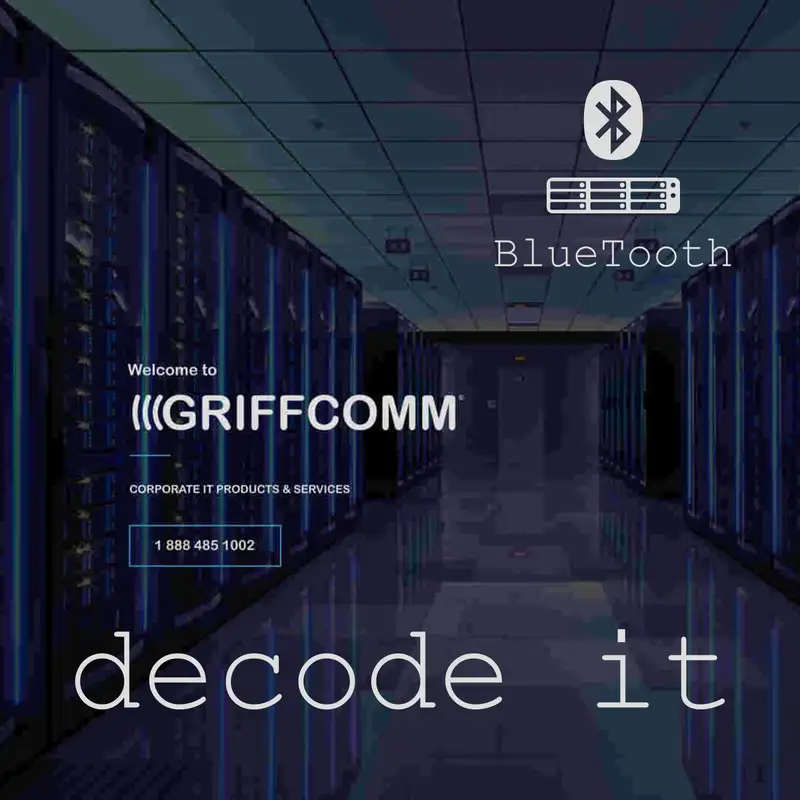Computer Hardware - Bluetooth
Bluetooth, a short range (under 10 meter) radio communication protocol to connect small devices to a host computer
Conception was a short link radio technology in 1989 by Nils Rybeck, CTO at Ericsson Mobile in Sweden.
Uses only 2.5 milliwatts of power over 2.4 - 2.48Ghz radio frequency, same as early WiFi, we covered this in an earlier podcast
The primary design was for devices such as headphones and speakers to connect with cell phones.
Ericsson mobile is the founder of the technology filing for two inventions on 12 June 1989
Development begun in 1994, by 1997 a workable solution was found by Orjan Johansson who then became the project leader
The name was inspired by Frans G Bengtssons historical novels The Long Ships, about the 10th century Viking Danish king Harald Bluetooth
Bluetooth was only a place holder name and was going to be replaced with something better such as PAN or RadioWave
I think PAN (personal area network) would have been way better, as it aligns with LAN and WAN
Due to time constraints at launch Bluetooth ended up being the official name for the technology
The Bluetooth logo is an amalgamation of Harald Bluetooth initials as seen in Scandinavian runes
Bluetooth is managed by Special Interest Group (SIG) having over 35000 member companies
Originally was an IEEE 802.15.1 standard, although is no longer maintained
May recognised this IEEE standard being its part of the Ethernet, hence i think PAN would have been a better acronym
Is very similar to Ethernet, in that it uses the IP layer as a protocol
In 1997 Adalio Sanchez then head of IBM ThinkPad product research and development approached Nils Rydbeck of Ericsson
about collaborating on integrating a mobile phone in to the ThinkPad notebook
It was concluded that the cellphone would require too much power resulting in inadequate battery life
However an agreement was made to use Ericssons short-link radio technology in the ThinkPad to achieve the goal of communication
Ericsson and IBM were not the leaders in there respective markets, so both agreed to make it an "open" industry standard
Ericsson contributed the short-link radio technology and IBM the patents around the logical layer
Adalio Sanchez of IBM then invited Stephen Nachtsheim of Intel to join.
The name Bluetooth was proposed by Jim Kardach of Intel in 1997 who was also one of the founders of SIG
WiFi also came around in 1997, we covered this in an earlier podcast
Intel then recruited Toshiba and Nokia.
1998 SIG was launched with Ericsson and IBM as founding signatories
then having 5 members, Ericsson, IBM, Intel, Toshiba and Nokia
1999 the first Bluetooth hands free headset was released earning "Best of show technology award"
Ericson first phone was the unreleased prototype T36, the revised T39 was in stores in 2001
SIG maintains the Bluetooth standard and logo, hardware needs to adhere to SIG specification to be marketed as a Bluetooth device
As of 2021, there were 4.7 billion Bluetooth enabled integrated chips sold
The first devices with Bluetooth in them were the Ericsson R520m (and T39) phones early 2001, IBM released a ThinkPad A30 October 2001
Vosi Technologies in Costa Mesa, California were the first large commercial company to attempt to use Bluetooth in the consumer market
via connection from a mobile phone to car audio system (hands free), they went on to attempt to create smart home technologies that used bluetooh for communication
At first many products were never fully released due to licensing agreements with larger companies such as Motorola
Bluetooth originally operated at 1Mbit/s, later EDR2 (Enhanced Data Rate) increased this to 2Mbit/s, EDR3 to 3Mbit/s
2019 Apple created HDR4 and HDR8 (4 and 8Mbit/s respectively) which also included forward error correction (FEC)
The technology operates as packet based protocol with a master and up to 7 slave devices in a piconet
Its time slot method with cycles of 0.3m/s, the master transmitting at even slots and the slaves transmitting at odd slots
data packets could be split over multiple slots when required
Devices can switch roles, a headset might be a master looking for a mobile to connect too,
once connected then will switch to a slave device being controlled from the cell phone
A cell phone looking for devices is a master looking for slaves, put your mobile in to "discoverable mode", its then a slave device waiting to be found
Bluetooth has classes to denote power requirements, as technology gets better, required power drops, hence the list appears to be reversed:
- Class 1 10 - 100mw
- Class 1.5 2.5 - 10mw
- Class 2 1 - 2.5mw
- Class 3 0.01 - 1mw
They also have profiles to better structure the communication methods such as:
- Headset Profile (HSP) headphones and earbuds to a cell phone or laptop.
- Health Device Profile (HDP) digital thermometer or heart rate detector to a cellphone or laptop
- Video Distribution Profile (VDP) video stream from a video camera to a TV recording device.
Microsoft supported Bluetooth natively (not requiring manufacture drivers) since Windows XP service pack 2 (25 august 2004)
Almost everything has Bluetooth in them now, even when only required to set up the device for long term use, such as configuration of the WiFi connection
I had the Ericsson T68i in 2001, it had Bluetooth, however i used Infrared communication to share internet to my HP Jornada 690 mobile PC
That phone survived being dropped in to a swimming pool while in Sanfransico, devices were way more robust back then.

